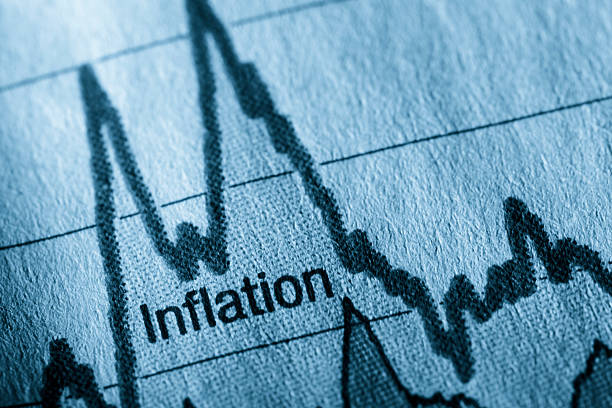Good Morning, in an upbeat end to the holiday-shortened week saw sterling (inflation) gain against the dollar above $1.4025, where it has opened this morning.
Several factors helped the pound rally; firstly, the Bank of England presented very upbeat forecasts for both the economy and the level of unemployment as the UK continues to ease successfully out of lockdown. Secondly, the Conservative party performed better than expected in the local elections. Thirdly the dollar fell quite sharply after Friday’s employment data was much worse than expected. Against the euro, the pound traded in a narrow range as the gyrations in the dollar market caused technical adjustments to pricing, and it has opened this morning virtually unchanged at €1.1550.
Over the weekend, election results continued to be announced including, those for both Scotland and London. As expected, London was held by the Labour party, but with a weaker endorsement than previously, and in Scotland, the SNP just failed to capture a majority, but this will not stop them from pushing for a second independence referendum. However, with Boris Johnson holding a strengthened mandate South of the border, he is likely to play hardball over the independence referendum. This week the market will be watching as tensions increase over the post-Brexit trade deal, which flared up into a confrontation over fishing off the shores of Jersey last week. Looking forward, we expect the market to carry on digesting last week’s events before the release of Gross Domestic Product in the UK on Wednesday. There is also a full data docket in the US to look forward to, including inflation as measured by the Consumer Price Index (CPI), which will be keenly watched as a sharp rise is predicted by some analysts.
GBP
After the excitement of the local elections, fishing disputes, and the Bank of England’s meeting last week, it looks like we have a slightly calmer time ahead. The only data of any real import being the announcement of both the Gross Domestic Product (GDP) for the first quarter. As the country has been able to return to its favourite occupation of shopping since lockdown partially ended, expectations are for a good figure. We will also watch the vaccination figures as we approach a further milestone on the roadmap to exiting lockdown the reopening of indoor entertainment next Monday, which will give the economy an additional boost. Alongside the GDP figure released on Wednesday, the latest Manufacturing and Industrial Production data will also be announced. Finally, the Bank of England could expand on last week’s economic forecasts when Governor Andrew Bailey speaks both tomorrow afternoon and Thursday evening. Increasingly his words will be studied for any sign of tightening as pent-up demand hits the economy causing fears of inflation to increase.
Euro
The euro has been performing well against the dollar and has opened this morning at $1.2150 against the greenback. Much of this gain came Friday afternoon after the Non-Farm payroll number in the US led to heavy selling of the dollar. Helping the euro strengthen is the feeling that Europe has now turned a corner in its fight against Coronavirus. Hopefully, it will be able to salvage its summer vacation period and, in doing so, revive its decimated service sector. It’s an extremely quiet week for data up ahead in Europe, and the US data releases will drive the direction of the euro against both the dollar and sterling. There is very little on the data docket this week, and much of Europe will be closed on Thursday for the Ascension Day Holiday. We will keep an eye out for the ZEW surveys on economic sentiment in Germany due tomorrow and its Consumer Price Index on Wednesday, but these rarely move the euro.
US
The Non-Farm Payroll numbers released last Friday were much lower than the consensus expected and resulted in an immediate and continued sell-off in the dollar as the US’s recovery miracle was called into doubt. In addition, the employment data supported the Federal Reserve’s policy of leaving rates lower for longer, encouraging the risk-on mood that took hold Friday afternoon. The dollar’s movements are likely to dominate the currency markets with a US-centric data-heavy week ahead. There are no major data releases due until Wednesday when April’s Consumer Price Index (CPI) is released, which is expected to show a jump to nearly 4% in the inflation rate, which will pressure the Federal Reserve to tighten policy. After the CPI data, it will be interesting how well received the issuance of $41bn 10-year Treasury notes is at the afternoon’s auction. On Thursday, the weekly jobless number is released, and on Friday, April’s Retail Sales and Industrial Production are published.
Scandi
The Swedish krona finished the week off on a strong note against most G10 currencies gaining more than 1% against the EUR on Friday. It was mainly buoyed by the poor non-farm figures rather than any Swedish-related macro data. Monday begins with the Housing Price Indicator for April, and Wednesday will see the latest CPI figure. The latter is expected to come in at 2.2%, 0.2% above the Riksbank’s target, and the first time in more than two years, it has reached these levels.
The Norwegian krone was mainly rangebound throughout most of last week with no significant data releases. Today the latest CPI figures are released and are expected to come in at 3.1%. Norges Bank has a target of 2%, which would further Governor Olsen’s case for a rate hike come September, we will also watch the GDP figures released on Wednesday.
Have a great week.
Synergy Team








